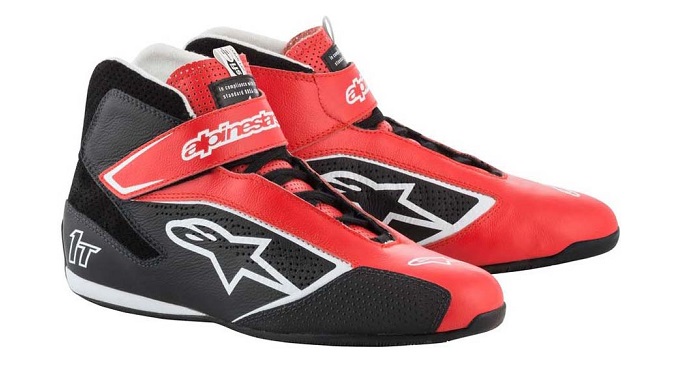Buyer’s Guide: Racing Shoes

Previously, we've gotten your hands, head, eyes, backside and body ready for race duty. But what about your feet? Racing shoes might seem like a somewhat trivial item, but if you consider that essentially half of your vehicle inputs are going to be delivered by way of whatever you have on your feet, the importance of the shoes you choose for the job becomes very apparent. So you may be asking yourself at this point, "What do I need in a good racing shoe?" Well, you've come to the right place for answers.
If you have a question about racing shoes that hasn't been addressed here, shoot us your question in the comments and we’ll be sure to update the guide with the applicable information.
What certifications should my racing shoes have?
Depending on the sanctioning body, your shoes will likely require some level of an FIA or SFI homologation. The level of certification you'll need is usually dependent on the type of competition you'll be involved in, so check the regulations for the event/class you'll be competing in and make sure that the shoes meet or exceed that certification. Certifications can be found on the description page for most shoes and are also usually tagged on the shoes themselves.
What about safety features?
Much like racing suits and gloves, a racing shoe's first job is to protect you from a fire hazard. Accordingly, you may already be familiar with the two most common materials used to prevent injury from fire: Nomex and CarbonX.
Nomex is a flame-resistant material similar to nylon, but with added rigidity and durability. Developed in the 1960s by DuPont, it is the most commonly used flame resistant material in racing shoe lining.
Similar to Nomex, CarbonX is another fire-resistant material. Developed in the late 90s, CarbonX is less common than Nomex but is considered by many to be significantly more durable and fire resistant. However, that added protection comes at a cost of thicker material, which translates into more heat insulation while racing.
In addition to fire protection, many shoes like these Alpinestars Tech-1 T Shoes also offer both external toe reinforcement for abrasion resistance as well as additional padding for increased comfort and protection against impacts.
What are the advantages and disadvantages of different shoe materials and designs?
As you compare different shoes, you'll notice that some are constructed with leather, some with suede, and some with both. Leather is generally more durable, but it also retains more heat. To combat this issue, some leather racing shoes are designed with perforated zones to enhance ventilation to keep temperatures down. Additionally, some manufactures use kangaroo or camel leather as opposed to traditional cowhide, as it is lighter and more comfortable.
Sole construction and material is also an important factor to consider, not only for the sake of comfort but also in terms of pedal grip and feel. While thick soles are usually preferable for a sport-oriented shoe, in this particular instance a thin, high quality rubber sole is more desirable, as a thin sole will allow you to keep your feet gripped securely on the pedals and aware of any feedback the pedals are providing you as you're driving.
How can the shoe design affect track performance?
First and foremost, the more comfortable you are in your race gear, the better you'll be able to perform. Beyond having a stable and secure fit, a shoe with slim profile will enhance your ability to transition from pedal to pedal, and will also make heel-and-toe downshifts easier to execute as well. Bulkier shoes, on the other hand, will have more of a tendency to get snagged when transitioning between pedals and moving your feet around, in turn taking some of your concentration away from the track.
What are some fitment features to look for?
Keeping your shoes properly secured to your foot isn't as easy as it may sound. To help accomplish this, some shoes use a thin tongue flap design to prevent the shoe from shifting from side to side on your foot, while lateral forefoot support further bolsters foot stability at the "ball" of your foot, and also offers increased protection from impacts. Some shoes also employ a Velcro strap placed at the ankle to provide a stable and secure fit from top to bottom as well.
What should I expect to pay?
Racing shoes range from about $100 to $450+. If you've read our other buyer's guides, this might start to sound redundant by now, but it bears repeating: When it comes to racing gear, you get what you pay for. And in this case, you're paying for your personal safety, comfort, and ability to properly control your vehicle. There are some things in life you can skimp on without much concern for possible repercussions, but safety equipment in a sport like auto racing doesn't really fall into that category. That said, someone who is buying shoes for a day at an autocross event probably doesn't need the same pair as someone who is planning to participate in a full season of wheel-to-wheel racing, so use your own discretion when determining what level of racing shoe you'll need for the type of racing you plan to do. See you at the track!
Click here to start shopping for racing shoes in the Winding Road Racing store.


















